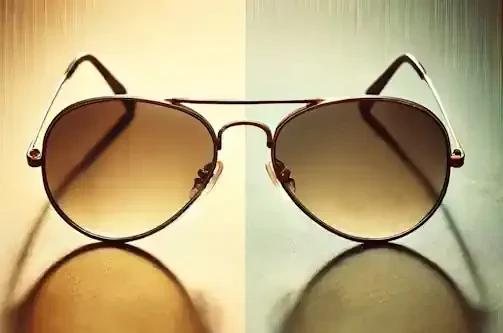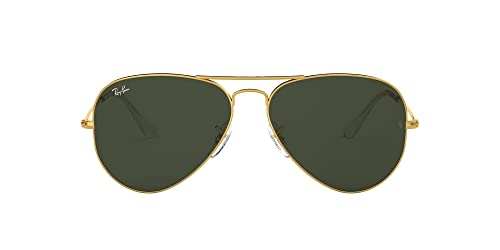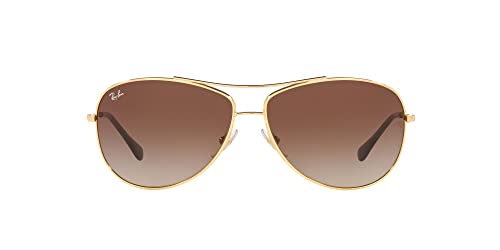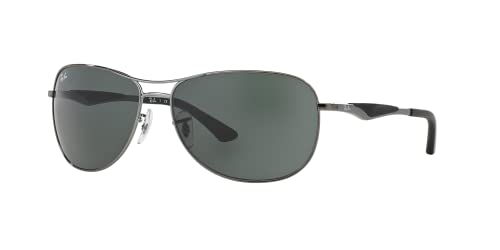Understanding Aviator Lens Design
The iconic aviator lens design has a rich history that dates back to the 1930s. Originally developed for pilots to protect their eyes while flying, aviator sunglasses have since become a staple in fashion and practical eyewear. The distinctive features of aviator lenses include a thin metal frame with double or triple bridge and teardrop-shaped lenses that typically cover a larger portion of the wearer’s face compared to other styles. This not only provides more protection from the sun but also gives aviator sunglasses their classic appeal.
Aviator frames and styles have evolved significantly through the years. From their military origins, aviators have transitioned into the fashion world, being adopted by movie stars and pop culture icons which helped cement their popularity. Today, aviators are available in a variety of frame shapes, including the original teardrop as well as square and rounded versions, catering to a wider range of face shapes and personal styles.
The evolution of aviator sunglasses has been marked by a blend of functionality and fashion. Over the decades, these lenses have been adapted with lighter materials and improved UV protection, making them suitable for both everyday use and specialized environments like high-altitude sports. This adaptation has allowed aviators to remain a popular eyewear choice across generations, combining timeless style with practical benefits.
This historical and stylistic journey of aviator lenses showcases their enduring appeal and versatility. From their practical beginnings to their status as a fashion icon, aviator sunglasses have proven to be more than just a trend. They are a piece of history that continues to evolve while retaining their distinctive identity.
Exploring Lens Materials
Aviator sunglasses have been crafted from a variety of materials, each offering unique benefits and challenges. Historically, glass was the primary material used for these lenses, valued for its clarity and scratch resistance. Glass lenses provide superior optical quality, ensuring that no vision distortion occurs at the edges of the lenses. However, despite their excellent clarity and resistance to scratching, glass lenses are heavier and can shatter upon impact, which may not be ideal for active lifestyles or certain sports.
In recent years, polycarbonate lenses have become increasingly popular for aviator sunglasses due to their lightweight and impact-resistant properties. These lenses are significantly lighter than glass, making them more comfortable for extended wear. Additionally, polycarbonate is highly resistant to shattering, providing an added safety benefit for both everyday wear and protective eyewear. The material also inherently offers UV protection, blocking harmful ultraviolet rays without the need for additional coatings.
High-index plastic lenses represent another advancement in eyewear technology, particularly beneficial for individuals requiring strong prescriptions. These lenses are thinner and lighter than conventional plastic and glass, reducing the weight and thickness of eyeglasses significantly. High-index lenses are especially suitable for aviator frames, which are often larger in size, as they minimize the magnification of the eyes and improve aesthetic appeal by reducing lens bulk.
For those on a budget, acrylic lenses might be a consideration. While not as durable or clear as polycarbonate or glass, acrylic offers a decent level of clarity and is more impact-resistant than glass. This material is lighter than glass and can be a good option for more casual or fashion-forward eyewear. However, it's important to note that acrylic lenses are more prone to scratches and may not provide the same level of optical clarity as other materials.
Each material used in the production of aviator lenses brings its unique set of properties to the table, influencing the comfort, safety, and aesthetic appeal of the sunglasses. As technology advances, the materials used in aviator lenses continue to evolve, offering wearers a wide range of options to suit their needs, preferences, and lifestyles. Choosing the right material depends largely on the wearer's specific requirements, including their typical activities, prescription needs, and personal style preferences.
Color Options For Aviator Lenses
The choice of lens color in aviator sunglasses is not only a matter of style but also of functionality, as different colors can enhance or reduce visibility under various lighting conditions. Classic grey lenses are known for their ability to maintain true color perception, making them a versatile choice for both sunny and overcast conditions. Grey lenses reduce overall brightness without altering color, providing a natural view that is comfortable for the eyes. This neutrality makes them suitable for general use and driving, as they effectively diminish glare while preserving the natural balance of colors.
Brown lenses are another popular option, particularly beneficial for enhancing contrast and visual depth. By improving the contrast, brown lenses make the environment appear warmer, which can be particularly useful in low-light conditions. These lenses filter out blue light, often resulting in sharper vision and better depth perception. This makes them ideal for activities like fishing or golf, where distance perception is crucial.
Blue lenses have become a trendy choice for those looking to make a fashion statement while still protecting their eyes. These lenses often reflect more light, which can reduce glare significantly. Blue lenses are particularly effective in foggy or misty conditions, as they can enhance contours and improve color perception. Additionally, they provide a soothing effect on the eyes, which can be comforting in bright conditions, although they are not typically recommended for driving.
Yellow and gold lenses offer unique benefits, particularly in enhancing depth perception and improving visibility in low-light conditions. These colors tend to make environments appear brighter by filtering out some of the blue light and increasing contrast. Such lenses are often used in shooting sports and skiing, where visibility and contrast are critical. Moreover, yellow and gold lenses can be beneficial during foggy or dusk times, enhancing clarity and perception.
The range of available lens colors in aviator sunglasses not only caters to individual style preferences but also serves specific practical purposes based on different environmental conditions. When selecting lens color, it is important to consider the typical use scenarios and the lighting conditions in which the sunglasses will primarily be used. Whether for fashion, driving, sports, or everyday wear, the color of aviator lenses can significantly impact both the functionality and the overall experience of the wearer.
UV Protection Standards
Understanding UV radiation and its effects is crucial for anyone looking to purchase quality sunglasses, especially aviator styles which are often used in highly sunny environments. Ultraviolet (UV) radiation comprises invisible rays from the sun that can be harmful to the eyes. Extended exposure to UV rays can lead to various eye problems, including cataracts, macular degeneration, and photokeratitis, often referred to as snow blindness. Hence, ensuring effective UV protection in eyewear is not just about comfort but about safeguarding ocular health.
The importance of UV protection cannot be overstated. Sunglasses that offer 100% UV protection can significantly reduce the risk of eye damage from solar radiation. When selecting aviator sunglasses, it is essential to check for labels that guarantee this level of protection. Labels should specify whether the glasses block UV 400, indicating they prevent all light rays with wavelengths up to 400 nanometers, covering all UVA and UVB rays.
Checking UV protection ratings is a simple yet vital step in the selection process. Reputable manufacturers will have their products tested for UV protection and label their sunglasses accordingly. Consumers should look for labels stating 'UV400' or '100% UV protection' to ensure maximum safety from solar radiation. It's important to be wary of sunglasses lacking these labels, as they may not provide adequate protection, despite having dark-tinted lenses which might deceive the wearer into believing they are sufficiently protected.
The eyewear industry adheres to certain standards and certifications that guide the production and verification of UV-protective qualities in sunglasses. In the United States, the American National Standards Institute (ANS, regulates these standards, ensuring that sunglasses meet strict criteria for UV protection. Similarly, international standards, such as those from the International Organization for Standardization (ISO), also provide guidelines to harmonize protective eyewear criteria globally.
Choosing aviator sunglasses with appropriate UV protection involves more than just aesthetics or brand preference; it requires an understanding of these standards and a diligent examination of product labeling to ensure that the eyewear will effectively shield the eyes from harmful UV rays. By educating themselves about these protections, consumers can make informed decisions that enhance their eye health while enjoying the style and functionality of their aviator sunglasses.
Advanced Lens Technologies
In the world of aviator sunglasses, advanced lens technologies enhance not only the style and appearance of the glasses but also significantly improve functionality and eye protection. Polarized lenses are one of the most beneficial technologies available today. These lenses incorporate a special filter that blocks intense reflected light, reducing glare. This is particularly useful in scenarios like driving or water sports, where the sun’s reflection off a flat surface can cause significant visibility issues. Polarized lenses help to provide clearer vision and reduce eye strain in these conditions.
Photochromic lenses offer another sophisticated technology, characterized by their ability to adjust their darkness in response to the intensity of UV light. These lenses darken on exposure to direct sunlight and become clear in low-light conditions. This adaptability makes photochromic lenses an excellent choice for individuals who frequently move between indoors and outdoors throughout the day. They eliminate the need for a separate pair of sunglasses, making them highly convenient and adaptable to changing light conditions.
Anti-reflective coatings are applied to the surface of lenses to reduce reflection and glare. This technology enhances the clarity of vision and reduces eye strain by allowing more light to pass through the lens. Anti-reflective coatings are particularly useful in high-glare environments and for people who spend considerable time using screens or driving at night. By minimizing distracting reflections, these coatings help to create a clearer and more focused visual experience.
Mirror coatings add a reflective layer to the outer surface of sunglass lenses, which provides several benefits beyond their appealing aesthetic. These coatings can reduce the amount of light entering the eyes, which is beneficial in extremely bright conditions. Additionally, mirror coatings can offer an extra layer of privacy, as they typically prevent others from seeing the wearer's eyes. Available in various colors, mirror coatings can be customized to enhance both the fashion and functional aspects of aviator sunglasses.
These advanced lens technologies not only improve the performance of aviator sunglasses but also enhance wearer comfort and protection. Incorporating features like polarization, photochromism, anti-reflective coatings, and mirror treatments, aviator lenses can be tailored to meet specific needs and preferences, ensuring that they offer more than just style — they provide substantial protection and functionality.
Choosing The Right Aviator Lens For Your Needs
Selecting the perfect aviator lens requires a thoughtful consideration of various factors, tailored to an individual's lifestyle, activities, and personal style. The choice of lens material plays a pivotal role in matching the sunglasses to the wearer's requirements. For those who prioritize durability and safety, especially in active or outdoor environments, polycarbonate lenses are ideal due to their impact resistance and lightweight properties. On the other hand, for individuals who value optical clarity and are perhaps more concerned with casual or fashion use, glass lenses might be more appropriate despite their heavier weight and vulnerability to shattering.
The color of the aviator lenses should also be chosen based on the typical environments and activities of the wearer. For instance, individuals who spend a lot of time driving during the day might benefit from brown or grey lenses, which minimize glare and do not distort colors, making them perfect for navigating the road. Conversely, for those engaged in outdoor sports like skiing or fishing, where light conditions can vary dramatically, photochromic lenses that adjust to different light levels would provide enhanced visual comfort and performance.
UV protection is another crucial factor to consider, especially for those who spend considerable time outdoors. Sunglasses that offer 100% UV protection are essential for protecting against harmful ultraviolet rays that can cause long-term eye damage. It is advisable to look for sunglasses that meet or exceed industry standards in UV protection to ensure comprehensive eye health over time.
Personal style should not be overlooked when selecting aviator lenses. With the wide array of frame designs and lens colors available, aviators can complement a wide range of personal styles and preferences. Whether the goal is to achieve a classic, sophisticated look with traditional metal frames and mirror coatings or a more modern style with bold, colorful frames, aviators offer enough variety to suit any taste.
Ultimately, the decision on which aviator lens to choose should balance functional needs with aesthetic preferences. By carefully considering how the sunglasses will be used, what conditions they will be used under, and what personal style is desired, individuals can select aviator lenses that not only look great but also offer optimal performance and protection.
Maintenance And Care For Aviator Lenses
Proper maintenance and care are essential to extend the lifespan and preserve the quality of aviator sunglasses. Different lens materials may require specific cleaning techniques to avoid damage and ensure longevity. For lenses made of glass, which are prone to shattering but resistant to scratches, using a soft, lint-free cloth with a gentle lens cleaner is advisable. This method helps to remove dirt and smudges without risking scratches that can impair vision.
For more delicate materials like polycarbonate or high-index plastic, special care must be taken to prevent scratches that can be more easily incurred compared to glass. These lenses should be cleaned with a solution specifically designed for delicate eyewear and wiped with a microfiber cloth, which can pick up particles without leaving scratches. Avoid using tissues or paper towels, as these can be too abrasive for such materials.
Proper storage of aviator sunglasses is equally crucial to their care. Sunglasses should be kept in a hard case whenever they are not in use to protect them from physical damage like being stepped on or crushed in a bag. For individuals who frequently transition between indoor and outdoor environments, having a readily accessible and protective case can make storage more convenient and secure.
Even with the best care, aviator lenses may eventually need to be replaced due to normal wear and tear or accidents. Knowing when and how to replace lenses can save both time and money. It's generally advisable to consult with a professional optician to assess whether a lens should be replaced, especially if there are deep scratches, cracks, or if the lenses no longer provide adequate UV protection.
Lastly, it’s beneficial to consider warranty and service options when purchasing aviator sunglasses. Many manufacturers offer limited warranties that cover defects in materials and workmanship. Knowing these details can provide peace of mind and protect against unforeseen expenses. Regular servicing, including professional cleaning and frame adjustments, can also help maintain the optimal condition and comfort of the sunglasses.
By following these care guidelines, owners of aviator sunglasses can ensure their eyewear remains in excellent condition, providing both style and protection for years to come.
Summary
The article "The Aviator Lens Bible: Everything You Need to Know About Materials, Colors & UV Protection" provides a comprehensive guide to aviator sunglasses, covering their history, materials, color options, UV protection, lens technologies, selection criteria, and maintenance tips. It traces the evolution of aviator sunglasses from their military origins to their status as a fashion staple, highlighting the iconic teardrop design and various frame styles.
The discussion on materials delves into the benefits and drawbacks of glass, polycarbonate, high-index plastic, and acrylic lenses, focusing on their impact on durability, weight, and clarity. The article also examines the functional significance of different lens colors like grey, brown, blue, yellow, and gold in enhancing visibility and reducing glare under specific conditions.
Significant emphasis is placed on the critical importance of UV protection, explaining how proper sunglasses can shield the eyes from harmful UV rays and detailing the standards and certifications that ensure effective protection. Advanced lens technologies such as polarization, photochromism, anti-reflective coatings, and mirror coatings are explored for their ability to improve visual clarity and adapt to varying light conditions.
Furthermore, the article offers advice on choosing the right aviator lenses based on one's lifestyle, activities, and personal style, and provides practical tips on how to care for and maintain these sunglasses to extend their lifespan and ensure ongoing protection and style.







